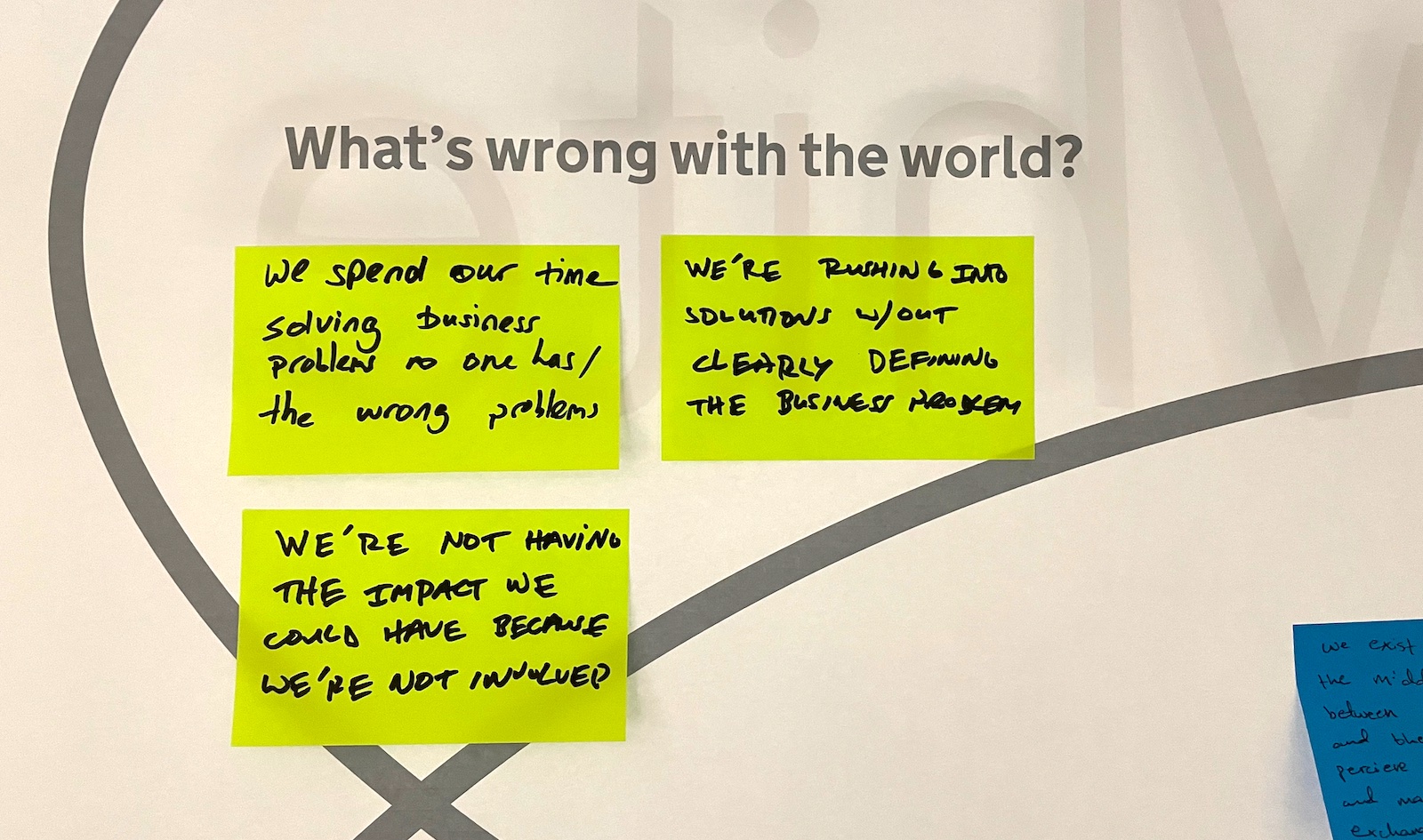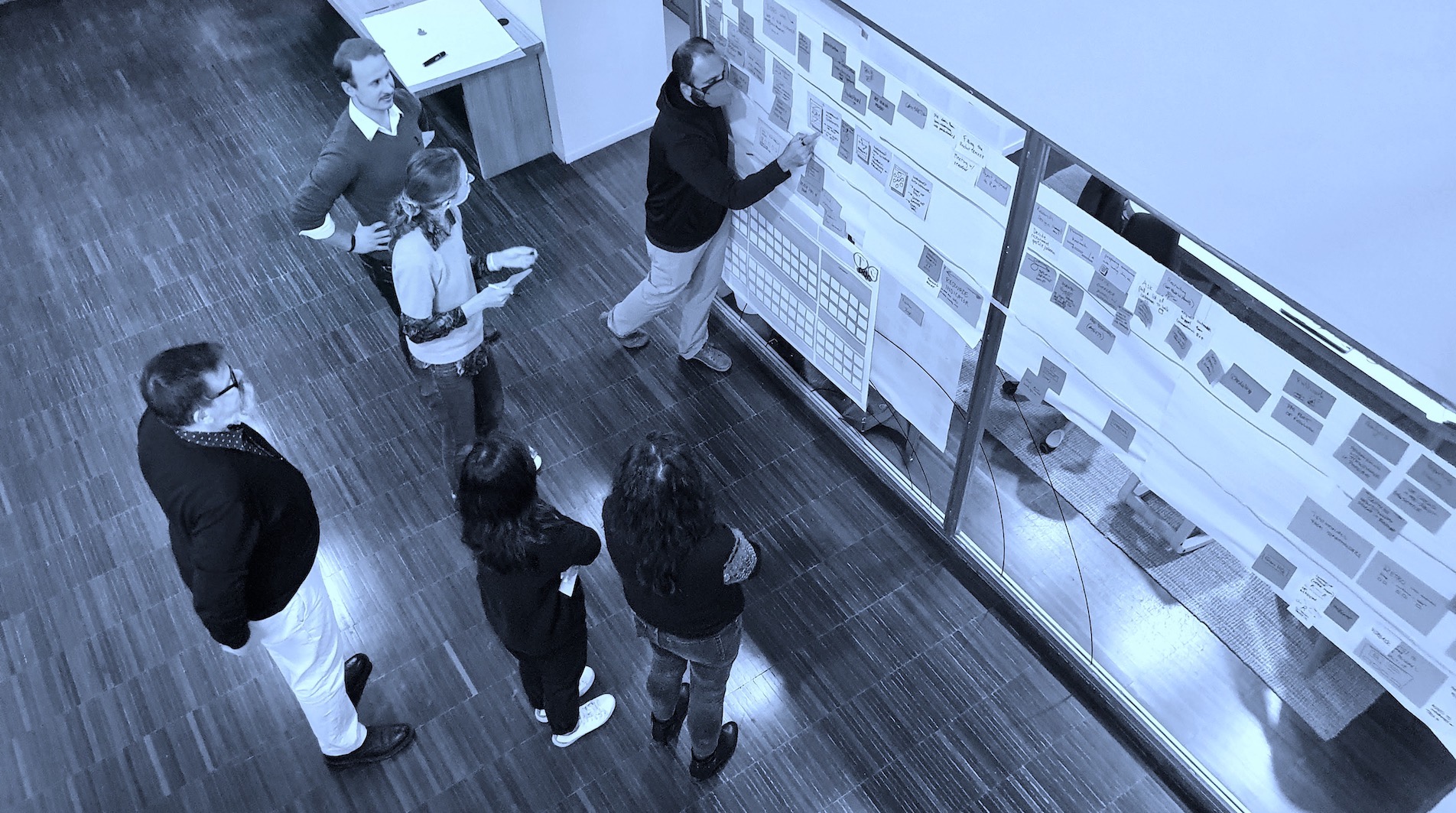Executive summary
My client in Barcelona was scaling up and chasing their “C” round of funding. The founders had stepped aside, taking chairmanship and R&D roles after recruiting a senior industry person to fill the CEO role.
As part of this setup, the leadership was 100% focused on growth, especially as measured in ARR. At this stage the original magic of the product was still alive at the company, but the new leaders recruited a c-suite, a cadre of VPs etc. with the intention of becoming a ‘big-boy’ company, winning round three of funding, and eventually going for IPO.
In the midst of this, a CPO was hired and they recruited a full-fat, a-list team to drive the product to the next level. I was part of that team.
Unfortunately, the product organisation was in many ways dysfunctional.

The problem
The product team had a heavy reliance on internal viewpoints and features were launched with significant fanfare internally, but missed the mark with customers, leading to low adoption rates and increasing churn.
The product, engineering, sales, and marketing teams operated in silos, with minimal collaboration and understanding of each other’s goals and challenges. Product roadmaps were created without thorough technical feasibility assessment, causing delay, and inconsistencies in delivery.
Underlying Dysfunctions:
- Lack of a unified vision and clear, communicated strategy across departments.
- Absence of collaborative planning sessions and regular cross-departmental check-ins.
- Leadership that doesn’t foster a culture of teamwork and open communication.

Essentially, the leadership could sense that while the culture created by the founders was still alive in some parts of the org, all the new, highly talented product people didn’t know what to do, specifically did not know how to come together as a coherent organisation with good levels of congruence in their delivery.
What did I do?
As Director of Service Design, I was tasked with creating a plan that would provide the structure to allow teams to leverage their user-centred design skills and deliver the performance uplift required by the business.
After commissioning a map of how the different teams aligned (or didn’t) and developing an understanding of how the inputs and outputs passed between the different groups with what outcomes, I set up short strategic design sprints with each team and created a series of blueprints for how the organisation could succeed.
The first team I worked with was the design research unit. Over the course of three, intensive days, I took them through my process:
1. Setting foundations for creativity Awareness, warm-ups, creative and lateral thinking exercises, establishing emotional safety.
2. Recognition of the problem Exploration of their problem space. What was going wrong and what was their understanding of the root causes of those problems; establishing causality relationships between problems.
3. Expressing guiding principles Using the problem space outputs as stimulus, the team built a series of product principles and evaluated their relationship with the organisations declared values.
4. Jointly formulating their purpose With the principles in place, I guided my counterpart and their team through a purpose butterfly exercise where they built out a visualisation of how their unique nature as a team (i.e. “why is it up to us”) intersected with their key problem (“what’s wrong with our world”). The resulting synthesis of that relationship was expressed as a purpose statement.
5. Fitting it together Knowing what they needed to achieve (their purpose) and how they wanted to behave (their principles) they then mapped out their business unit’s customers and their needs, mapping the requirements of each, and logging the inputs and outputs of each connection. This provided the framework for the change they needed to design in their service.
6. Blueprinting the new service The team now had all the required elements to describe how their new service would work (the needs it would meet; the actions required by team members; the capabilities to deploy; the supporting technology; the organisation of data; and the infrastructure to deploy). I led the team through a blueprinting exercise that resulted in a series of documents that would support the creation of the team’s improved offering
What was the impact?
The results were compelling. The VP customer experience was able to orchestrate a change program which led to positive outcomes for the product organisation. The teams were reorganised and the results are being realised today.
Can I help you solve a similar problem? dug@goodlookslikethis.com
